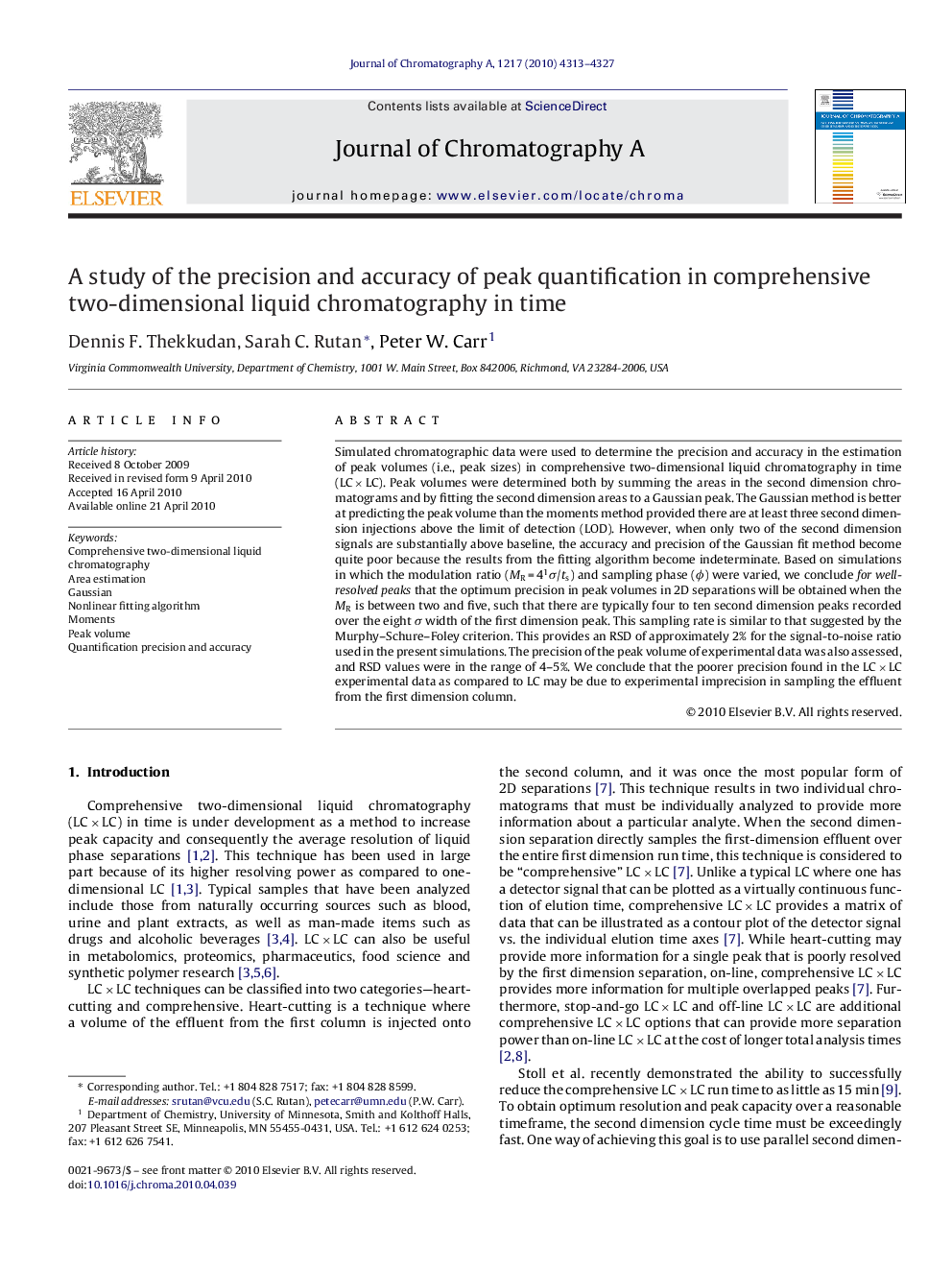| Article ID | Journal | Published Year | Pages | File Type |
|---|---|---|---|---|
| 1205225 | Journal of Chromatography A | 2010 | 15 Pages |
Simulated chromatographic data were used to determine the precision and accuracy in the estimation of peak volumes (i.e., peak sizes) in comprehensive two-dimensional liquid chromatography in time (LC × LC). Peak volumes were determined both by summing the areas in the second dimension chromatograms and by fitting the second dimension areas to a Gaussian peak. The Gaussian method is better at predicting the peak volume than the moments method provided there are at least three second dimension injections above the limit of detection (LOD). However, when only two of the second dimension signals are substantially above baseline, the accuracy and precision of the Gaussian fit method become quite poor because the results from the fitting algorithm become indeterminate. Based on simulations in which the modulation ratio (MR = 41σ/ts) and sampling phase (ϕ) were varied, we conclude for well-resolved peaks that the optimum precision in peak volumes in 2D separations will be obtained when the MR is between two and five, such that there are typically four to ten second dimension peaks recorded over the eight σ width of the first dimension peak. This sampling rate is similar to that suggested by the Murphy–Schure–Foley criterion. This provides an RSD of approximately 2% for the signal-to-noise ratio used in the present simulations. The precision of the peak volume of experimental data was also assessed, and RSD values were in the range of 4–5%. We conclude that the poorer precision found in the LC × LC experimental data as compared to LC may be due to experimental imprecision in sampling the effluent from the first dimension column.
